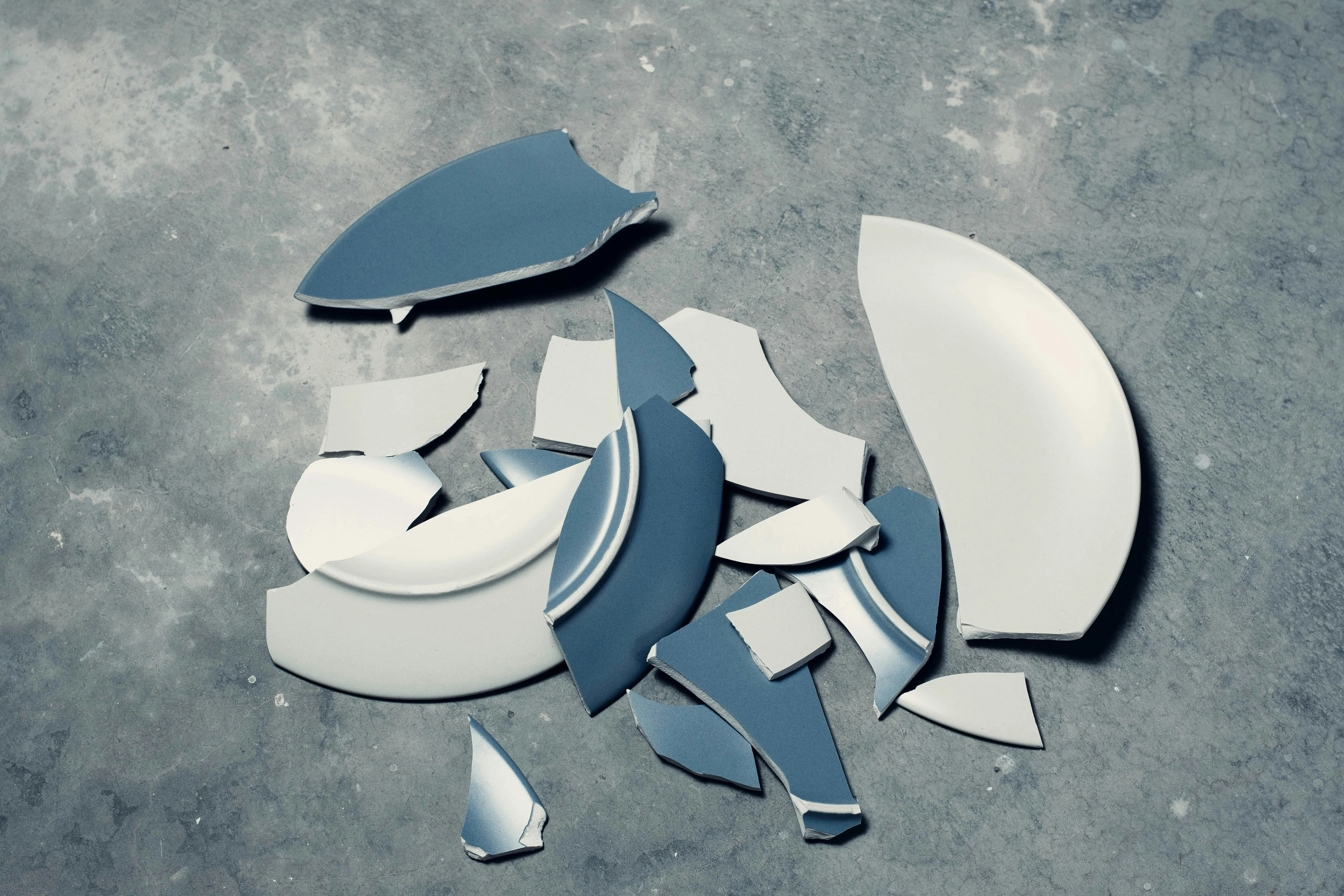Welcome to the Broken Ceramic Dishes exhibit.
Fragments of blue and earthen pottery offer glimpses into the past. These dishes, once part of everyday life, are now cracked and chipped, yet they retain their charm and beauty. The blue ceramic plates are adorned with delicate patterns, likely created through underglazing, a process where the designs are painted onto the surface before the final firing. The pottery dishes, with their warm brown and red tones, reflect the natural colors of the clay from which they were made. Though incomplete, these broken pieces still speak to the artistry and functionality they once possessed.
The blue ceramic dishes were likely crafted using a method called slipcasting, where liquid clay, or slip, is poured into a mold to form the shape of the dish. Afterward, they were fired in a kiln at high temperatures, making them durable and vibrant. The intricate blue designs are made with cobalt oxide, giving them their striking color. Many of the pottery dishes, in contrast, were made using wheel-throwing, a technique that allowed the potter to shape the clay by hand on a spinning wheel. The fractures in these dishes reveal the fine craftsmanship that went into creating them, even if time and use have taken their toll.
Though broken, these ceramic and pottery dishes provide valuable insight into the lives of the people who used them. They were likely used for serving meals or storing food, playing an essential role in the daily routines of past societies. The cracks, chips, and missing pieces hint at the years of use these dishes endured before they were discarded or broken. Despite their damaged state, these fragments of ceramic and pottery hold stories of family gatherings, meals shared, and the hands that crafted and handled them.
 Museum of Broken Things
Museum of Broken Things
